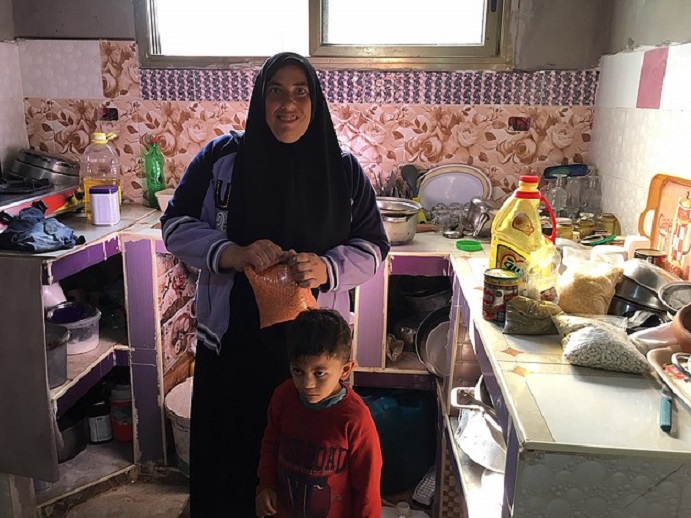OCHA / February 12, 2020
United Nations Office for the Coordination of Humanitarian Affairs (OCHA)
Based on a 2018 survey, over 1.2 million people in Gaza, or 62.2 per cent of households, were identified as moderately or severely food insecure, compared with 53.3 per cent in 2014, when the previous survey was conducted. In contrast, food insecurity in the West Bank decreased to 9.2 per cent, down from 11.8 per cent in 2014.
Food insecurity is primarily the result of poverty and unemployment. The unemployment rate in Gaza reached an average of 46 per cent in the first three quarters of 2019, a decade-long high, with youth unemployment at almost 62 per cent in the third quarter of the year. In contrast, in the first nine months of 2019, the West Bank recorded the lowest unemployment rate in a decade-less than 15 per cent.[1]
Annual average unemployment rates
Sanuora’s story: Sanuora, 35, is a divorced mother, who lives with her six children at her parents’ house in Beit Lahiya, North Gaza. Finding a job is virtually impossible, due to her lack of education and formal work experience. The electricity cuts have forced Sanuora to purchase certain types of dry food instead of more nutritious dairy products, as she can no longer store food in her refrigerator, nor use her makeshift oven (read more). In 2019, Sanuora underwent an open-heart surgery that exacerbated her vulnerability. She has continued to receive assistance from the World Food Programme, as well as to accumulate debts.
NOTE
[1] Palestinian Central Bureau of Statistics (PCBS). Figures have been recently revised by PCBS in order to fully match guidance provided by the International Labour Organization.





![vrijdag 17 mei in Amsterdam: in gesprek [videoverbinding] met Palestijnse arts Ghassan Abu-Sittah](https://palestina-komitee.nl/wp-content/uploads/2024/04/abu-Sittha-1-1-218x150.png)







